Snapshots from the Audit Trail
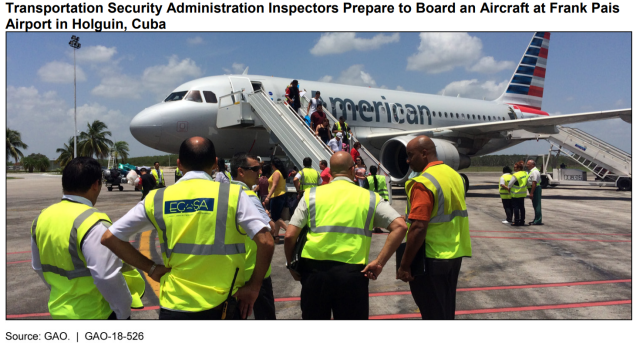 Marine debris in the Florida Keys
In 2017, Hurricanes Harvey, Irma, Maria, and the California wildfires created unprecedented demand for federal disaster help. Congress provided at least $120 billion in supplemental funding for these disasters. We reported that the timing and scale of the disaster damages nationwide caused shortages in available debris removal contractors and delays in removing debris.
Marine debris in the Florida Keys
In 2017, Hurricanes Harvey, Irma, Maria, and the California wildfires created unprecedented demand for federal disaster help. Congress provided at least $120 billion in supplemental funding for these disasters. We reported that the timing and scale of the disaster damages nationwide caused shortages in available debris removal contractors and delays in removing debris.
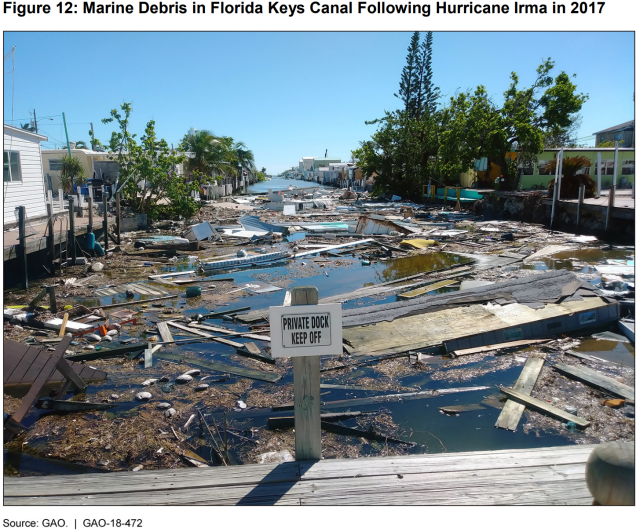 Capital project needs at HBCUs
We identified significant capital project needs at Historically Black Colleges and Universities to ensure well-maintained, safe, and functional facilities. This photo depicts a public HBCU we visited where much of their building space had suffered damage from severe weather and other causes.
Capital project needs at HBCUs
We identified significant capital project needs at Historically Black Colleges and Universities to ensure well-maintained, safe, and functional facilities. This photo depicts a public HBCU we visited where much of their building space had suffered damage from severe weather and other causes.
 Wildlife products seized in Miami
The illegal wildlife trade—estimated to be worth $7 billion to $23 billion annually—is pushing protected and endangered animal species to the brink of extinction. The United States and Asia are key sources of demand for a variety of wildlife.
Wildlife products seized in Miami
The illegal wildlife trade—estimated to be worth $7 billion to $23 billion annually—is pushing protected and endangered animal species to the brink of extinction. The United States and Asia are key sources of demand for a variety of wildlife.
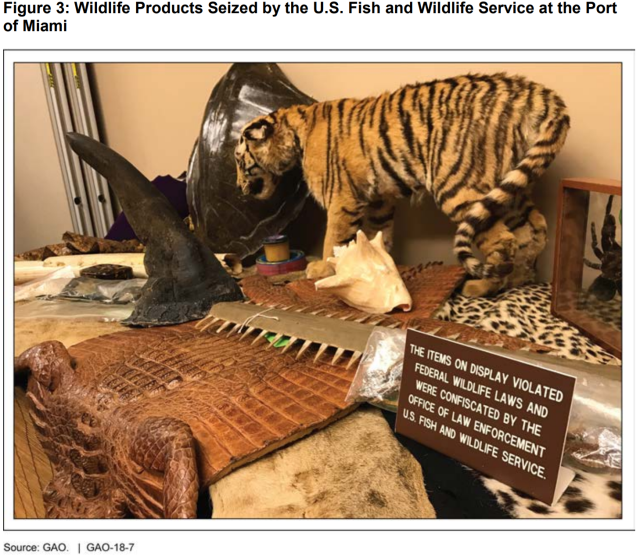 Safe handling of synthetic opioids
Federal agencies have developed guidance for safely handling synthetic opioids. The Drug Enforcement Administration’s guidance notes that if a first responder encounters a situation where the scene is highly contaminated from fentanyl (a substance 100 times stronger than morphine), then he or she needs to wear a specialized full-body suit with a self-contained breathing apparatus, such as this one.
Safe handling of synthetic opioids
Federal agencies have developed guidance for safely handling synthetic opioids. The Drug Enforcement Administration’s guidance notes that if a first responder encounters a situation where the scene is highly contaminated from fentanyl (a substance 100 times stronger than morphine), then he or she needs to wear a specialized full-body suit with a self-contained breathing apparatus, such as this one.
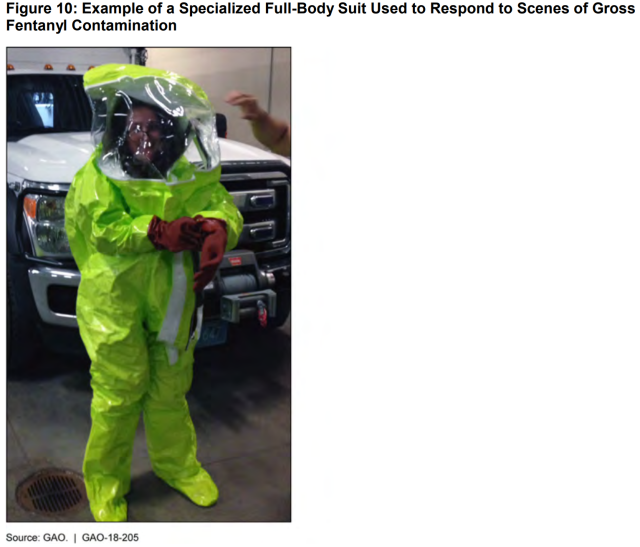 Volume of paperwork
Throughout the life of a major disaster declaration, jurisdictions, including tribes, are required to maintain paperwork to document the recovery projects. This photo shows an example of the volume of paperwork needed to support and close out the recovery projects associated with a landslide in Washington State, according to the tribal and state officials involved.
Volume of paperwork
Throughout the life of a major disaster declaration, jurisdictions, including tribes, are required to maintain paperwork to document the recovery projects. This photo shows an example of the volume of paperwork needed to support and close out the recovery projects associated with a landslide in Washington State, according to the tribal and state officials involved.
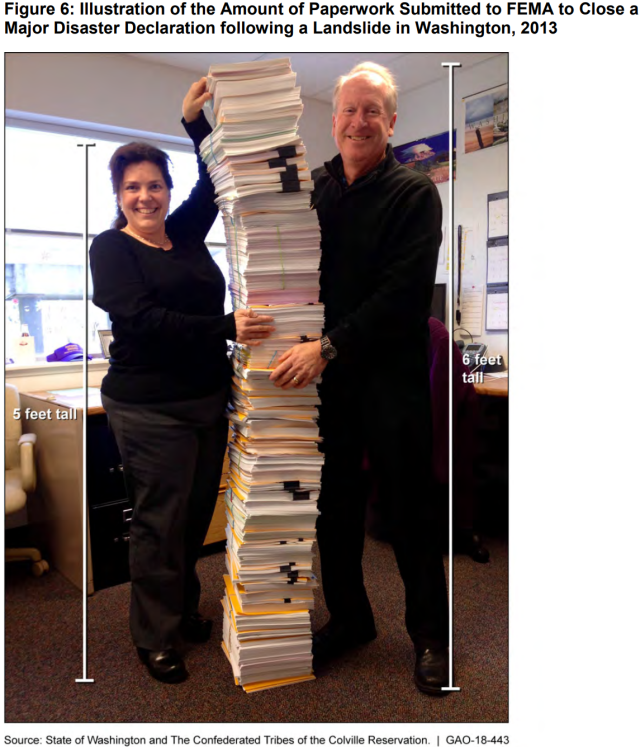 Baby turtles on the move
In our previous work on DOD adaptation to climate change impacts, we noted how these impacts may have caused a protected turtle species to nest on a part of the beach where it previously had not nested, limiting where the military can train. This photo illustrates this type of impact.
Baby turtles on the move
In our previous work on DOD adaptation to climate change impacts, we noted how these impacts may have caused a protected turtle species to nest on a part of the beach where it previously had not nested, limiting where the military can train. This photo illustrates this type of impact.
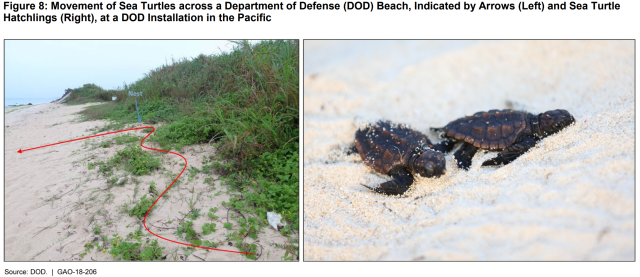 What does “smaller than 5 millimeters” look like?
Microbeads are plastic pieces smaller than 5 millimeters that are added as exfoliants to health and beauty products, such as some cleansers and toothpastes. These tiny particles may pass through some water filtration systems and end up in the oceans and the Great Lakes, posing a potential threat to aquatic life.
What does “smaller than 5 millimeters” look like?
Microbeads are plastic pieces smaller than 5 millimeters that are added as exfoliants to health and beauty products, such as some cleansers and toothpastes. These tiny particles may pass through some water filtration systems and end up in the oceans and the Great Lakes, posing a potential threat to aquatic life.

- Comments on GAO’s WatchBlog? Contact blog@gao.gov.

GAO's mission is to provide Congress with fact-based, nonpartisan information that can help improve federal government performance and ensure accountability for the benefit of the American people. GAO launched its WatchBlog in January, 2014, as part of its continuing effort to reach its audiences—Congress and the American people—where they are currently looking for information.
The blog format allows GAO to provide a little more context about its work than it can offer on its other social media platforms. Posts will tie GAO work to current events and the news; show how GAO’s work is affecting agencies or legislation; highlight reports, testimonies, and issue areas where GAO does work; and provide information about GAO itself, among other things.
Please send any feedback on GAO's WatchBlog to blog@gao.gov.
